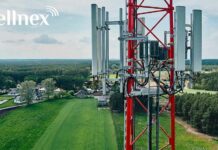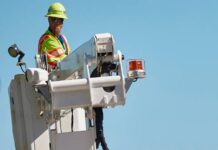Australian mobile operator Telstra alongside partners Ericsson and Qualcomm claimed a 5G download speed record Wednesday, hitting 5 Gbps for a single user on a commercial network.
The test leveraged New Radio (NR) carrier aggregation for millimeter wave spectrum.
Performed at Telstra’s 5G Innovation Centre on the Gold Coast, the 5G data call combined eight 100-megahertz channels of mmWave spectrum in the n257 (28 GHz) band together with two 20-megahertz of 4G LTE CA. Ericsson called it “a major milestone for wireless communication,” with a total of 840 MHz of spectrum helping deliver the new maximum throughput speed record.
In November Nokia touted a 5G speed record with Qualcomm and Elisa, citing combined speeds from two devices that reached 8 Gbps.
RELATED: Qualcomm, Ericsson near peak in 5G standalone carrier aggregation test at 2.5 GHz
The commercial production network in Australia used the Ericsson Radio System mmWave Streetmacro 6701 base station for the recent 5G data call. It also relied on a smartphone form factor mobile test device using Qualcomm’s Snapdragon X60 5G Modem-RF system and third generation QTM535 mmWave antenna modules. Qualcomm’s X60 supports carrier aggregation across all key sub-6 GHz and millimeter wave 5G spectrum bands and combinations.
Last week, Telstra passed a goalpost for 5G deployment, reaching 50% of Australia’s population with its 5G footprint. The network has about 2,650 5G sites on-air and so far, there are more than 750,000 5G-capable devices connected. Telstra now aims to cover 75% of the population with 5G before the end of June.
A rollout using mmWave spectrum is planned for 2021, following Australia’s upcoming 5G auction and using spectrum in the 26 GHz band.
“We believe mmWave is the next important iteration of 5G, technology that will take 5G to the next level, something we have been testing and working with the global ecosystem partners on Australia’s intended frequency (26GHz) since 2017,” wrote Nikos Katinakis, Group Executive, Networks & IT at Telstra in a Wednesday post. “We have come a long way from the customised equipment we used back then and this achievement is truly world leading.”
Katinakis noted that Telstra will take learnings from the recent speed tests to help optimize a wider-scale deployment of mmWave 5G technology.
In the U.S. carriers also are looking to carrier aggregation for a 5G boost, not just for speed, but capacity as well. Verizon has completed tests with Samsung and Qualcomm using 8-component carrier aggregation. T-Mobile, meanwhile, has worked to pull more out of its low- and mid-band (600 MHz and 2.5 GHz) spectrum for 5G and completed the first 5G standalone (SA) data session with NR carrier aggregation.
During a December investor conference, T-Mobile President of Technology Neville Ray said to expect carrier aggregation for 5G bands early this year and OEM device rollouts to be “a little staggered.”
To that end, Ericsson and Nokia both just secured new 5-year multi-billion-dollar network deals to upgrade and expand T-Mobile’s 5G, including advanced capabilities like 5G CA.




















